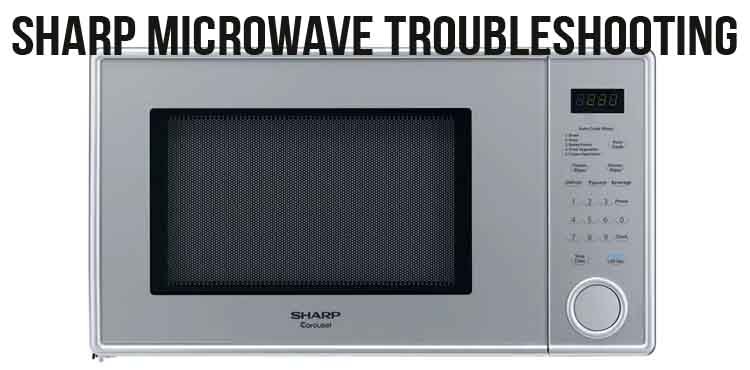
When your microwave suddenly displays an “E3” error, it’s like your appliance raising its hand to say, “Hey, something’s not quite right here!” But don’t worry, it doesn’t mean the end of your faithful microwave. This code often indicates a problem related to the unit’s sensor system, which helps the microwave cook your food evenly and efficiently. Think of it as a helpful alert rather than a cause for panic. In this article, we’ll explore the typical reasons behind this error and guide you through understanding and resolving it.
Understanding the E3 Error Code
Before diving into the causes, it helps to grasp what the E3 error truly signifies. In the simplest terms, an E3 error is like a red flag indicating there might be a snag in your microwave’s sensor system. Sensors in microwaves are akin to a chef’s experienced nose, ensuring your meal is cooked perfectly, without overdoing or undercooking it. These sensors detect humidity or temperature changes inside the microwave and adjust the cooking process accordingly.
When the E3 error pops up, it’s often your microwave’s way of saying that it can’t detect conditions properly to make those adjustments. This could be due to a malfunctioning sensor or an obstruction that interferes with its capability to sense correctly. In some cases, electrical issues like a short circuit or a faulty connection could also trigger this error message. Understanding this not only demystifies the code but also sets the stage for identifying potential solutions.
Now, you might wonder if this issue is something you can fix on your own or if it requires professional help. The answer depends on the underlying cause. But don’t worry, as we dig deeper into the causes, you’ll get a more precise idea of whether it’s a DIY fix or if calling in a pro is the way to go.
Common Causes of the E3 Error Code
So, what exactly triggers this error code? Let’s walk through the usual suspects. One of the primary causes of an E3 error is a faulty humidity sensor. Imagine trying to bake a cake without knowing when it’s done. Just like missing cues in baking can ruin a cake, a malfunctioning sensor can cause your microwave to perform inadequately. When sensors go awry, they fail to detect the moisture or temperature levels, leading to uneven cooking or the microwave refusing to start until it’s fixed.
Another potential cause is electronic interference. The wiring in a microwave is a bit like our nervous system, with lots of tiny connections making sure everything communicates smoothly. If this “nervous system” encounters issues—like loose wires or faulty circuitry—the microwave might misinterpret these signals as errors, triggering the E3 fault code. Keeping your microwave’s wiring in good shape is crucial for its smooth functioning.
Lastly, sometimes the issue might be as simple as a software glitch. Just like our gadgets have occasional hiccups, so do microwaves. A software error could lead your microwave to mistakenly display an E3 code. In such cases, often a simple reset, which we’ll discuss later, can do wonders.
Steps to Troubleshoot and Fix the E3 Error
If you’re seeing the E3 error code, you might think your microwave’s days are numbered, but fear not! You can often troubleshoot this on your own. First, ensure your microwave is properly powered off. Unplug it from the wall socket and let it sit idle for a few minutes. This is akin to rebooting your computer when it acts up, allowing the system to reset itself.
After plugging it back in and turning it on, check to see if the error persists. If it does, inspect the interior of the microwave for any obstructions or dirt around the sensor area. Cleaning any debris or residue buildup can sometimes solve the problem, much like clearing the nozzle of a clogging faucet.
If the problem continues, a more thorough inspection of the sensing elements might be necessary. For those with a bit of technical know-how, removing the microwave’s casing to check for loose wires or blown fuses could be a next step. However, always remember safety first and consider seeking professional help if you’re unsure.
When to Call a Professional
So, when is it time to throw in the towel and reach out for professional assistance? If the error persists after attempting simple troubleshooting steps, or if you feel uncomfortable working with electrical components, it’s wise to call in an expert. A professional technician has the tools and experience to diagnose and fix the issue safely and efficiently.
Having a professional look at it can save you future headaches and potentially extend the lifespan of your microwave. They can also provide preventative maintenance tips to help avoid similar issues down the road. Sometimes, peace of mind is worth the extra cost, especially if your microwave is essential to your daily routine.
Preventive Tips for Avoiding the E3 Error
Prevention is always better than cure, right? To keep your microwave in top shape and avoid the dreaded E3, there are some simple steps you can take. Regularly cleaning your microwave’s interior ensures sensors remain unobstructed and function correctly. Just as keeping your car’s windshield clean provides a clear view, a clean microwave interior helps sensors “see” better.
Avoid placing metallic or reflective items inside, as they can interfere with the sensors and cause problems. It’s like avoiding bad weather when driving; unnecessary obstacles should be avoided when possible to ensure smooth functioning.
Finally, pay attention to your microwave’s health. If you notice irregular performance or other error codes, address them promptly before they snowball into larger issues. A quick call to a professional or a simple fixes might save you from more complex repairs later on.
In conclusion, while the E3 error code might initially cause frustration, understanding its common causes and how to troubleshoot them can alleviate much of the stress. With a bit of care and maintenance, your microwave can continue to serve you well, keeping your kitchen running smoothly.